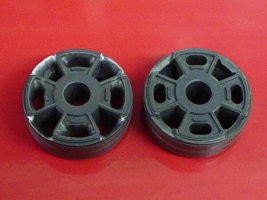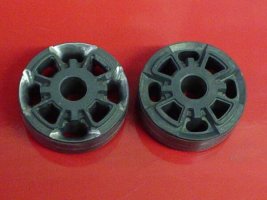I service a shock for a guy last week & found that the piston was modified. It looks like it was "ported" I guess would be how to describe it. The angles have been ground down & smoothed out. The inlet side have been ground down to aprox 45 degrees, instead of 90 degrees. The orifice is the same size, just had the angles ground & smoothed. I guess so the fluid doesn't have to make such a sharp turn. I took some pictures but I can't figure out how to post them. The ower says his bike is much smoother over sharp edge accelleration bumps than his friends bike (witch is the same bike only stock). This is an '02 honda crf450. The shim stack is pretty much stock. So if the shim stack is the same, the piston orifice's are the same, only the angles on the piston is different is this a way of taking out some harshness on sharp edges or this some garage monkey trying to find a use for his new grinder? Without being able to ride the bike myself I have to go by what the owner says. He is the third owner of this bike & doen't know who did this modification. So have any of you tried "porting" your piston? I'm wondering about the theory of this.
p.s. I'll post the pictures if i can figure out how.
p.s. I'll post the pictures if i can figure out how.

